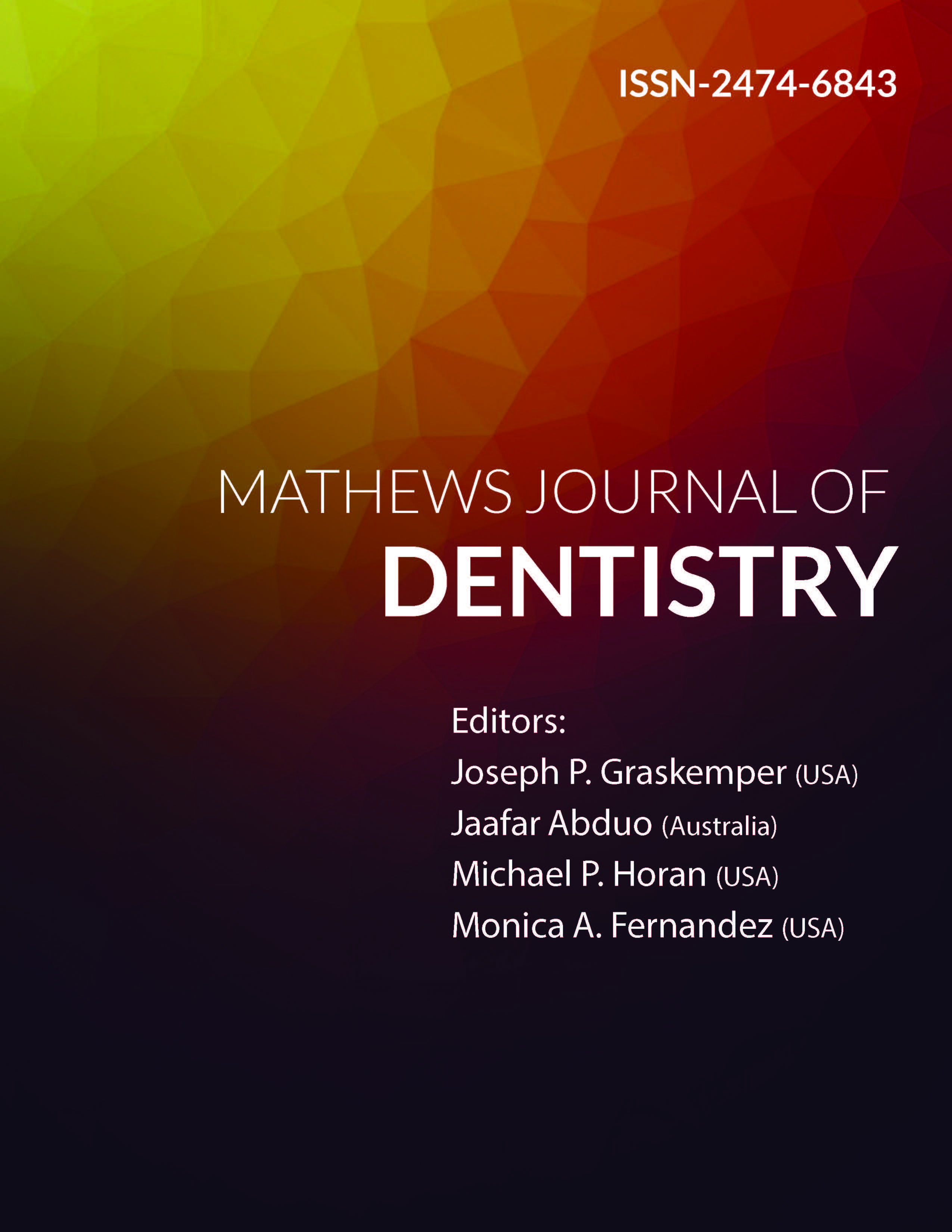
Information Links
Previous Issues Volume 5, Issue 1 - 2021
Management of a Large Periapical Lesion Using Laser Assisted Disinfection in Regenerative Endodontic Therapy – A Case Report
Divya Doddamani*, Saraswathi V. Naik, Basappa Nadig, Archana P. Betur
Bapuji Dental College and Hospital, Davangere, India
*Corresponding author: Dr. Divya Doddamani, Department of Pedodontics and Preventive Dentistry, Bapuji Dental College and Hospital, MCC B Block, Davangere, India. Email: [email protected]; Tel: +919739216624
Received Date: November 21, 2021
Published Date: December 01, 2021
Copyrights: Doddamani D, et al. © (2021).
Citation: Doddamani D, et al. (2021). Management of a Large Periapical Lesion Using Laser Assisted Disinfection in Regenerative Endodontic Therapy – A Case Report. Mathews J Dentistry. 5(1):28.
INTRODUCTION
Traumatic injuries of teeth could be one of the causes for large periapical lesions. The success of endodontic treatment in such large lesion is directly related with elimination of pathogenic microorganisms from root canal and it depends on resolution of all the clinical signs and symptoms with complete periapical tissue repair or regeneration. [1]
Regenerative endodontic therapy (RET) in a tooth with apical periodontitis and apical abscess resulted in the regression of clinical signs and symptoms and healing of apical periodontitis. The success of RET in a tooth with large periapical lesion may depend on the eradication of microbes from the root canal system. Uncontrolled infection will hamper repair and regeneration by the release of pro-inflammatory cytokines, such as tumor necrosis factor-alpha, interleukin – 1 alpha are capable of inhibiting stem cell differentiation. SCAP (Stem cells of apical papilla) introduced in the canal space showed an osteogenic differentiation instead of odontogenic differentiation in the presence of bacterial by-products. Therefore, the intra-radicular infection should be controlled for pulp and peri radicular tissue regeneration and repair. [2]
Lasers assisted disinfection methods can always be used effectively along with other traditional disinfection methods. Primary goal of laser in disinfection is to eradicate microorganisms, removal of debris and smear layer which will ensure successful endodontic therapy. Effectiveness of laser assisted disinfection has been documented in treating periapical lesion. Photodynamic therapy was used to disinfect the root canal and platelet-rich fibrin was used to revitalize the pulp. Disinfection with photodynamic therapy combined with platelet-rich fibrin leads to satisfactory root development in 10 months. [3] Efficacy of diode laser has been proved in disinfection of root canals and maturogenesis of immature teeth. Disinfection plays a major role in successful outcome of teeth treated with regenerative endodontics. [4] This case report aims to describe the regenerative endodontic outcome in necrotic young permanent teeth with large periapical lesion when treated with laser assisted disinfection.